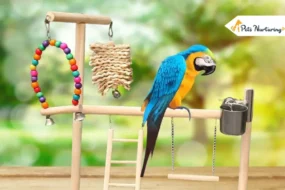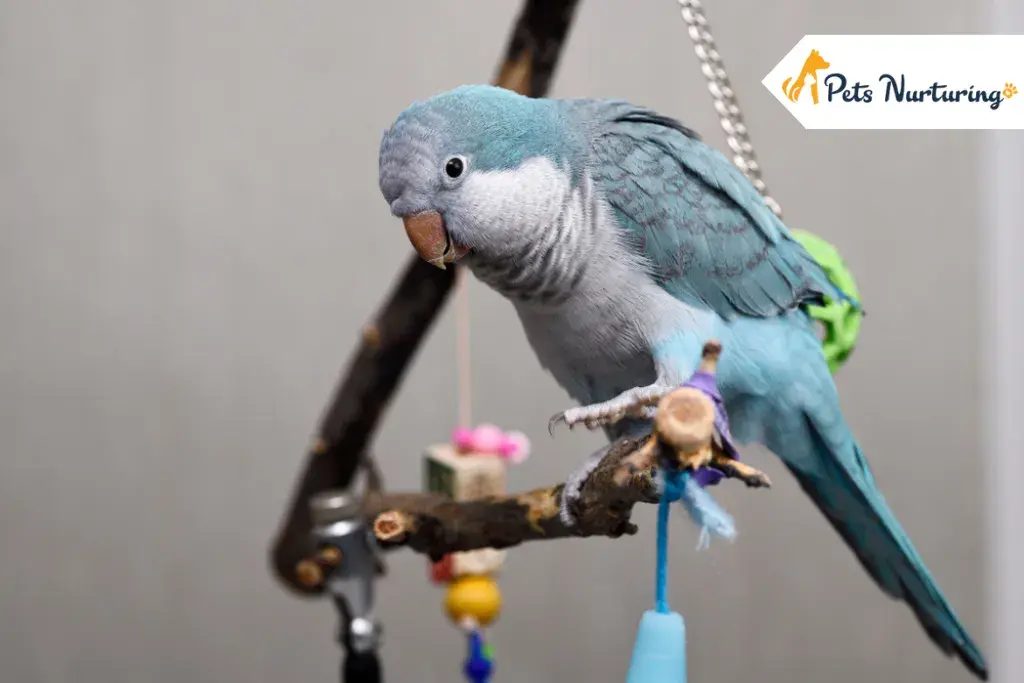
Quaker parrots, also called Monk parakeets, are smart and lively birds that can be great pets. But they need proper care and attention to stay healthy and happy. If you are thinking about getting or already have a Quaker, we are here to help you learn more about them. Our guide has everything you need to know about taking care of these birds.
Whether you’re a new owner or a seasoned bird lover, our guide will give you all the essential information you need to keep your Quaker parakeet happy.
Let’s learn about Quaker parrots together!
Breed Overview
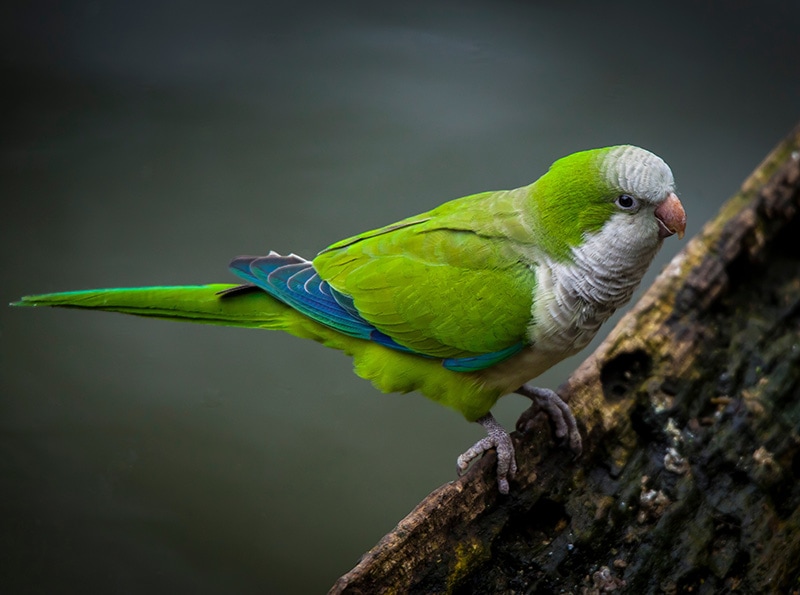
Quaker parrots are commonly known as monk parakeets. They are famous for their friendly and funny personalities. These birds are great for people who love birds and want a pet that can talk a bit like a big parrots.
They’re a good choice for new bird owners who are ready to commit to caring for them. Quaker parakeets easily adjust to living with people. However, it’s important to check the rules in your area before getting one, as in some places in the U.S., it’s against the law to have them as pets.
Quaker Parrot
Name: Quaker parrot
Scientific Name: Myiopsitta monachus
Common Names: Monk parakeetsQuaker parakeetsMonk parrotGray-breasted parakeetGreen parakeetMontevideo parakeet
Size: Height – 10 to 12 inchesWeight – 5 to 5 ounces
Lifespan: 20 to 30 years
Temperament: SocialIntelligentPlayfulSometimes territorial
Talking Ability: Excellent
Diet: SeedsFruitsVegetablesPellets
Habitat Needs: Spacious cage with perches for exercise
Social Needs: Highly social
Color: GreenBlueGrayLutino (yellow) mutations
Origin: Native to South America
History and Origin
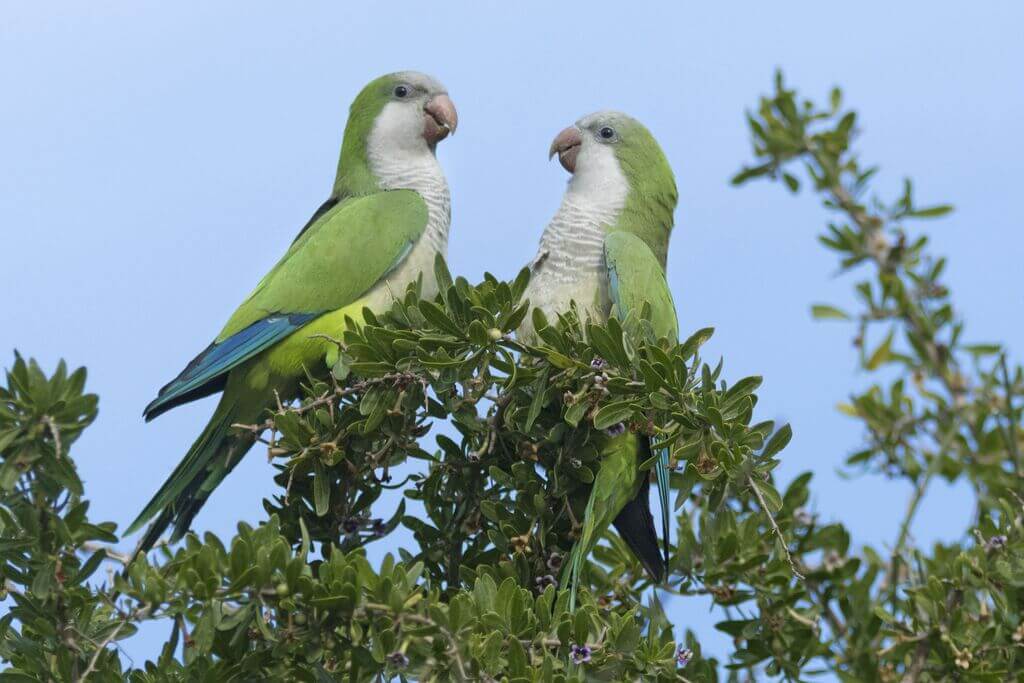
The Quaker parrot is originally from a small part of South America. They are found in regions stretching from central Bolivia and southern Brazil to parts of central Argentina.
These birds prefer living in wooded areas and are known for forming strong bonds within their communities. Unlike other parrots, Quakers are unique in that they construct their own nests. They spend a lot of time building intricate homes using twigs and branches, often with multiple rooms.
In their natural habitat, groups of Quakers will build nests close to each other, forming what can be likened to Quaker neighborhoods. Some of these nest communities can become quite large, almost the size of a small car.
Quaker parakeets are tough and adaptable birds, capable of surviving in various environments. This resilience has led to feral colonies of Quakers popping up in many urban areas worldwide. However, in some places, particularly in the southern United States, these wild populations can become problematic, posing threats to crops and native bird species.
Quaker parrots can build nests as big as a small car.
Size
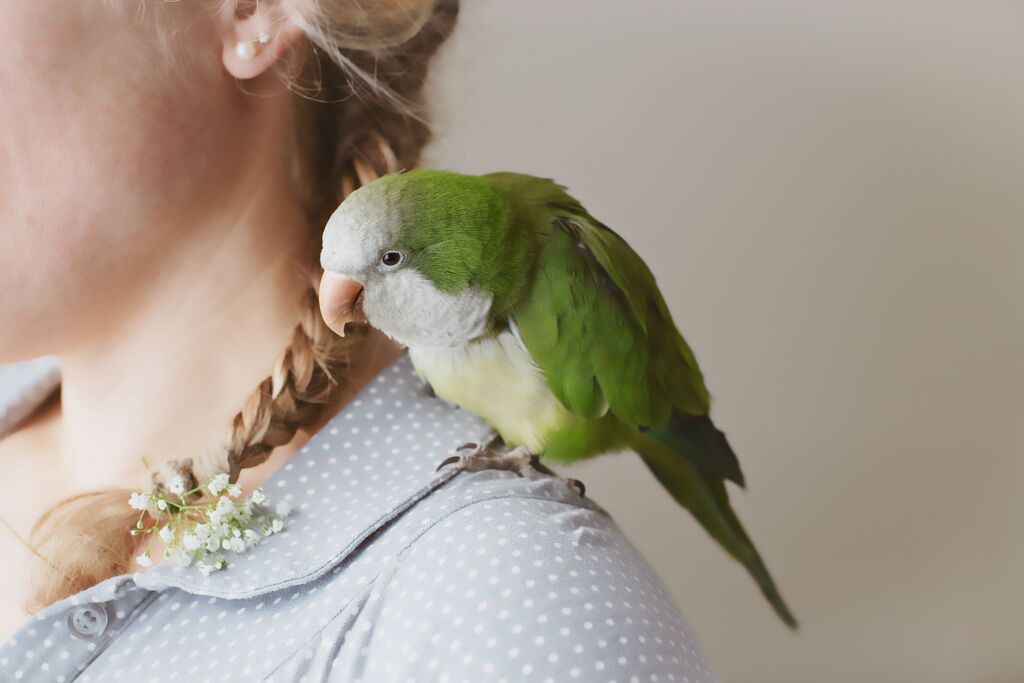
Quaker parrots are relatively small birds, measuring around 11 inches in length from beak to tail. An adult typically weighs about 3.5 ounces, although those in the wild may reach slightly larger sizes, up to 4.4 to 4.9 ounces.
Identifying the gender of Quaker parakeets can be challenging as they are monomorphic. This means males and females look alike.
Typically, females are slightly smaller, about 10 to 20%, but this isn’t always a reliable method for gender identification. DNA or feather testing is more accurate for determining the sex of Quakers.
Colors and Appearance
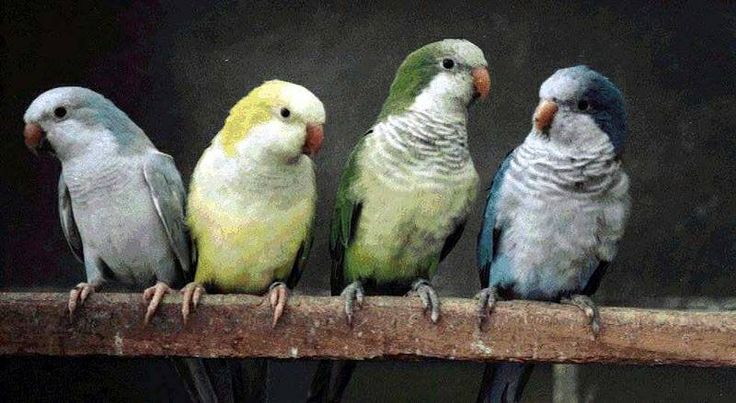
Adult monk parakeets typically have vibrant green feathers covering their wings, head, and back. Their distinctive marker is the gray coloring on their cheeks, breast, and throat. It resembles the attire worn by Colonial-era Quakers, which inspired their name.
They have striking blue flying feathers and a softer green hue on the underpart of their tails. Their beaks are horn-colored, and their feet are gray. In appearance, they somewhat resemble stout cockatiels.
In domestic breeding, Quaker parakeets with colors different from their natural plumage have been developed. These variations include birds with blue, white, and yellow coloring instead of the typical green. Remember, Quaker parrot price depends on their color.
Through captive breeding programs, an assortment of stunning color mutations has been developed in monk parrots. One popular mutation is the blue hybrid parakeet, which emerged in the early 2000s. Breeders have also introduced cinnamon, lutino, albino, and pied variations to the monk parrot spectrum.
Personality and Behavior
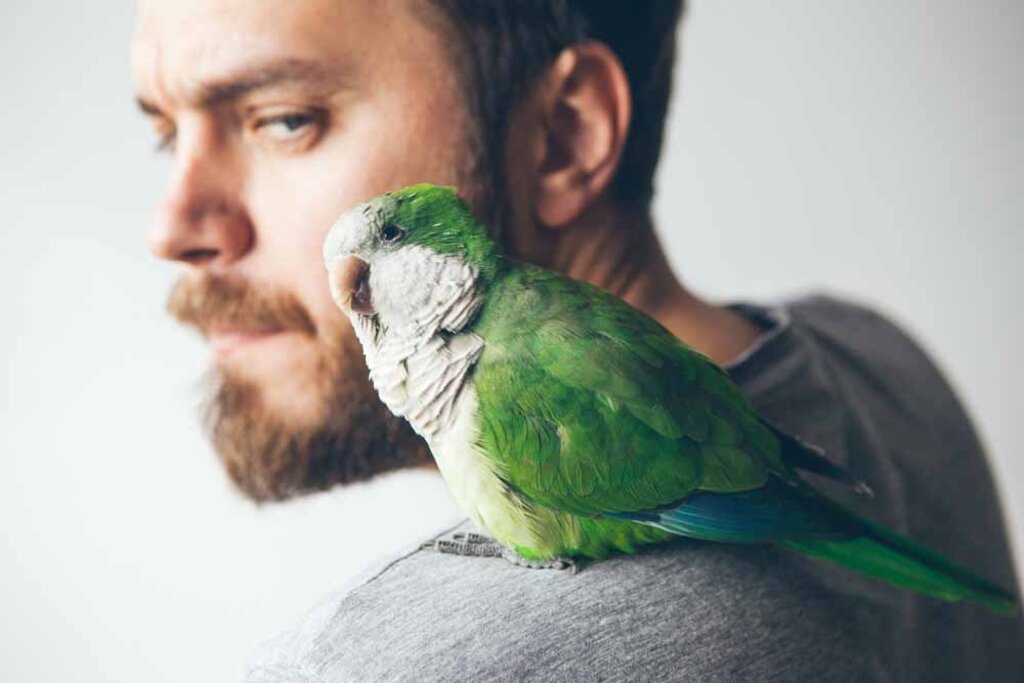
Quaker parrots are naturally social and confident birds. They’re incredibly entertaining, often behaving like tiny clowns. Despite their small size, they possess the personality of larger birds. They are outgoing, bold, and quite chatty. Quakers are famous for their amazing talking abilities.
In captivity, Quaker parakeets tend to form close bonds with 1 individual and are reputed for their loyalty. They love cuddling and head pets, and you’ll be greeted with excited squeaks when you come home. Many handfed ones are calm and can make ideal pets for kids.
Monk parrots have a playful and curious nature. You will often see them hanging upside down, playing with toys, and solving puzzles. These birds love being the center of attention and can develop strong bonds with their owners.
However, remember that without proper socialization and training, Quaker parrots may display aggressive behaviors such as – screaming, biting, or feather plucking. But, with consistent positive reinforcement and training, you can correct these behaviors.
To keep your Quaker parakeet happy, you need to provide plenty of puzzles, toys, and activities that challenge them both mentally and physically. Regular out-of-cage time and social interaction with their human caregivers are also necessary.
Baby Quaker parrots sometimes shake their heads when asking for food.
Talking Abilities and Speech
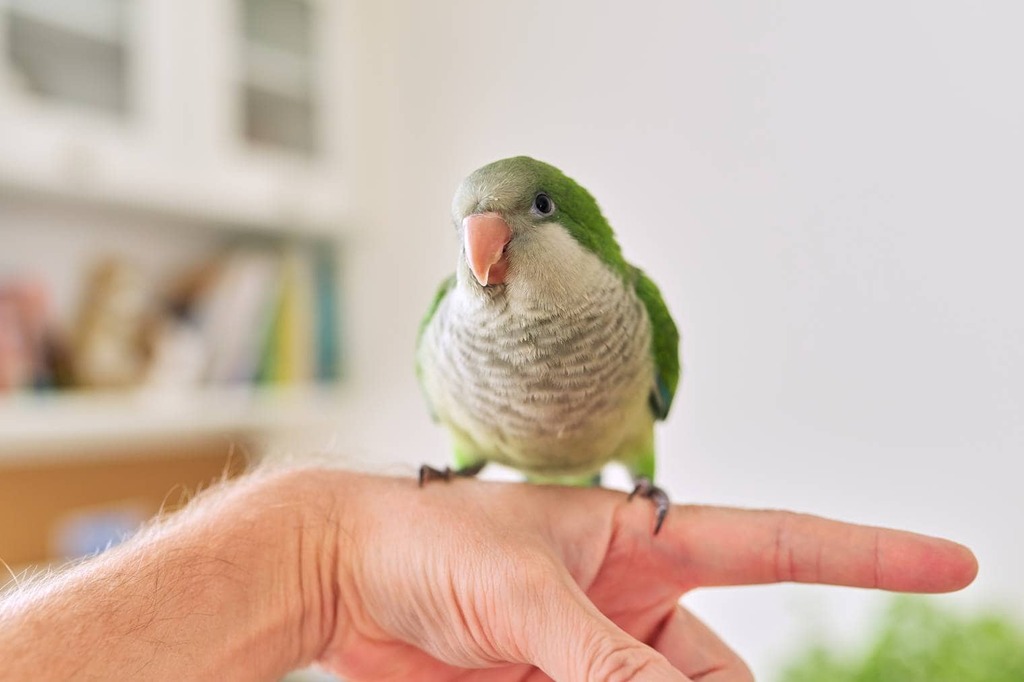
Despite their name, monk parakeets are quite vocal creatures. Individuals with sensitivity to noise should carefully consider before bringing one home, as they have the ability to wake even the deepest sleeper.
Quakers are known for their impressive talking abilities. They often master a wide vocabulary and even string together numerous phrases. These birds are also skilled at imitating sounds and singing, adding to their charm. When you have more than one Quaker in a space, expect lively chatter as they interact with each other.
Opinions on the pitch of Quaker parrots vary among owners. Some find them relatively quiet, while others may consider them noisy. While they don’t produce deafening hollers like some parrots, they do vocalize occasionally. Generally, their noise level shouldn’t be disruptive to neighbors.
Diet and Nutrition
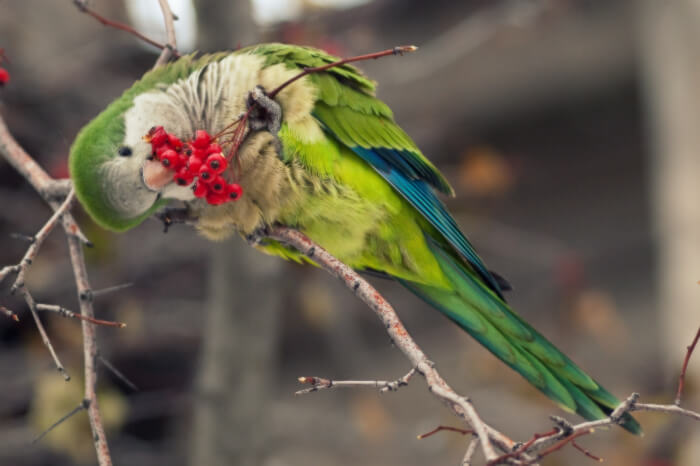
Maintaining proper nutrition is crucial for keeping your Quaker parrot healthy and energetic. Their diet should include a variety of fresh veggies, fruits, grains, and high-quality pellets to make sure they get all the essential vitamins and minerals.
A balanced diet for Quaker parakeets consists of roughly,
- 60% high-quality pellets
- 30% fresh fruits and veggies
- 10% grains and seeds
Always provide fresh water and clean their food and water bowls regularly to prevent bacteria build-up.
Safe fruits and veggies for Quaker parrots include,
- Apples
- Berries
- Oranges
- Carrots
- Kale
- Broccoli
- Spinach
Avoid feeding them foods that are harmful, like
- Chocolate
- Avocado
- Alcohol
- Caffeine
- Sugary treats
Be mindful of high-fat foods to prevent obesity.
Occasional treats like whole grains, nuts, and cooked eggs can be given in moderation. Keep an eye on their weight and adjust their diet as needed to ensure they stay healthy.
Offer around 3 tablespoons of pellets per day, along with at least 1/4 cup of fresh produce in the morning. Any uneaten fresh foods should be removed by the end of the day.
Quaker parrot colonies have special sounds, like unique dialects.
Common Health Issues
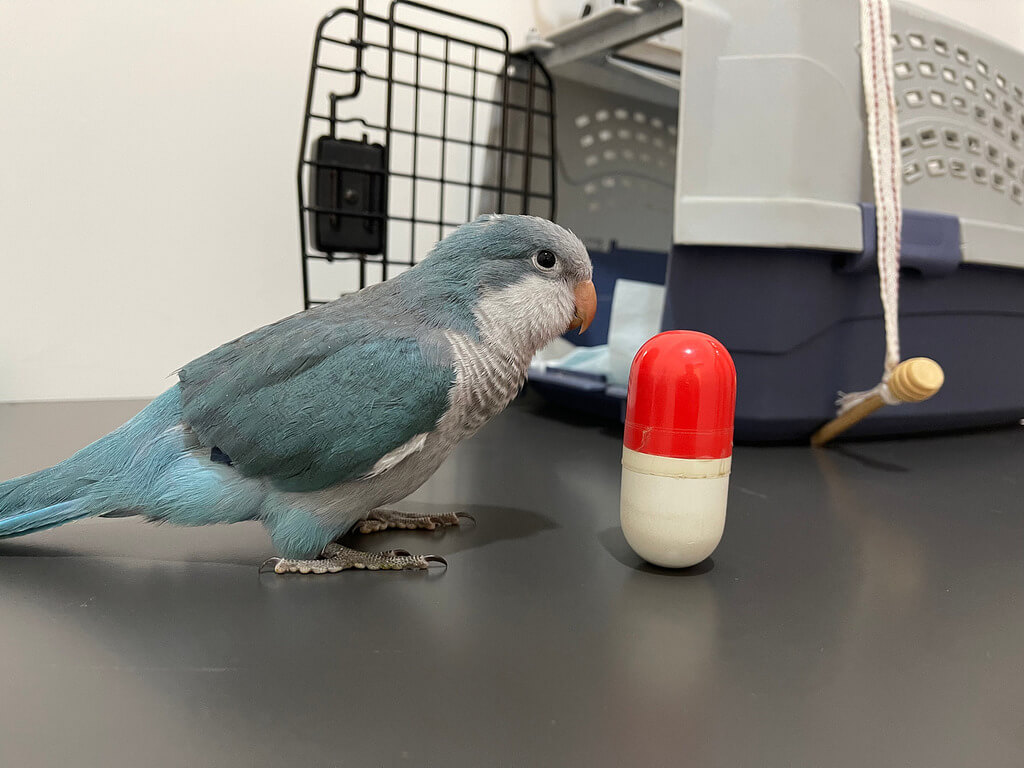
Just like any pets, Quaker parrots can face certain health challenges. Being aware of these issues and taking preventive measures can keep your bird healthy and happy.
Obesity
Obesity is a common concern among Quaker parakeets due to their tendency to overeat, especially foods high in fat or sugar. To prevent obesity, provide a balanced diet and monitor their weight regularly. Regular exercise, like flying and out-of-cage time, is also essential for their physical health.
Fatty Liver
It is typically caused by a diet high in fat, particularly seed-based diets. Offering a balanced and varied diet, with seeds given only as occasional treats, can help maintain your bird’s health and prevent this condition.
Respiratory Infections
Respiratory infections, often triggered by exposure to cigarette smoke, drafts, or poor air quality, are another worry for Quaker parrots. Keep your bird’s cage in a well-ventilated area and steer clear of smoke or chemicals to avoid respiratory issues.
Feather Plucking
It is a behavior seen in Quaker parakeets, often linked to stress, boredom, or health problems. Provide plenty of mental stimulation, social interaction, and a balanced diet to prevent feather plucking. If the behavior persists, consult a vet to rule out any underlying health issues.
Regular veterinary check-ups are vital for monitoring your Quaker parrot’s health and catching any potential issues early. Look for an avian veterinarian experienced in treating monk parrots to make sure your bird receives the best care possible.
Housing and Cage Setup
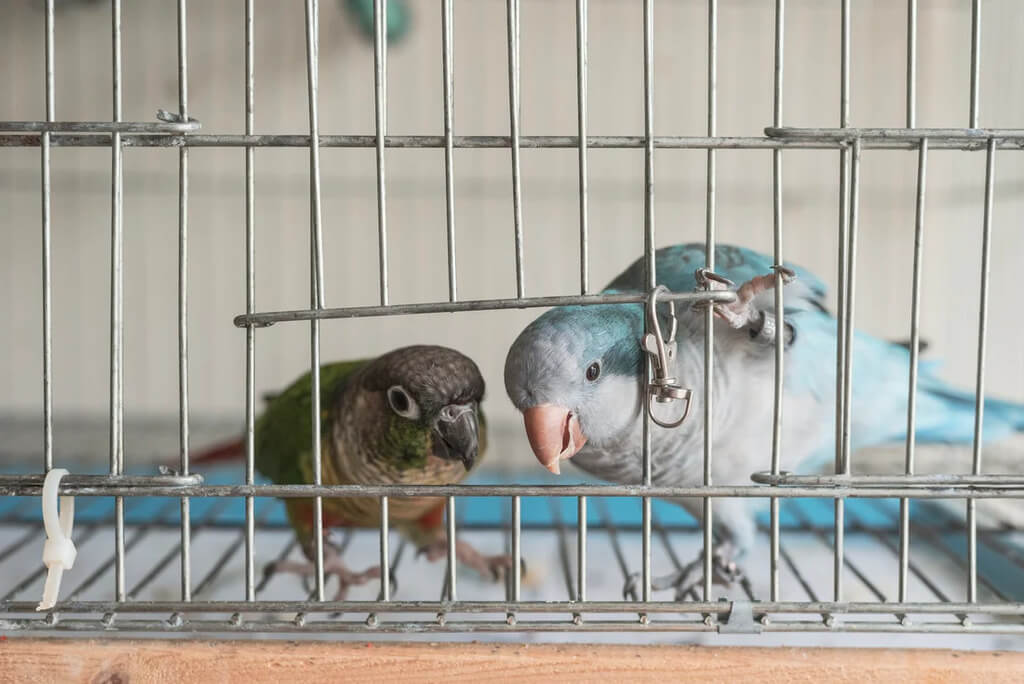
Creating a comfortable habitat for your Quaker parrot is vital for their happiness and health. The cage should be spacious enough to allow them to spread their wings and move freely. A minimum cage size for a single Quaker parakeet is about 2 feet long, wide, and high. Make sure the cage has horizontal bars for climbing and plenty of perches for resting and exercising.
Position the cage in a well-lit area, away from drafts and direct sunlight. Monk parrots are sensitive to temperature changes, so it’s important to keep the environment cozy. Clean the cage regularly to prevent the build-up of waste and bacteria.
Inside the cage, offer a variety of toys, perches, and swings to keep your Quaker parakeet entertained and engaged. They enjoy playing with bells, chewing on wooden toys, and shredding paper. Rotate their toys frequently to keep them interested and prevent boredom.
Since monk parakeets can be messy eaters, consider placing a tray or grate at the bottom of the cage to catch food debris. This will make cleaning the cage simpler and maintain a clean environment for your bird.
Their nests contain chambers or rooms.
Hygiene and Grooming

Keeping your Quaker parakeet and its environment clean is essential. Give your bird a bath every other day by placing a shallow basin or misting it with a spray bottle if it’s not keen on bathing.
Equally important is cleaning the cage daily to remove droppings and leftover food to prevent infections. If you offer fresh vegetables, discard them after a few hours, even if your Quaker hasn’t eaten any.
Breeding
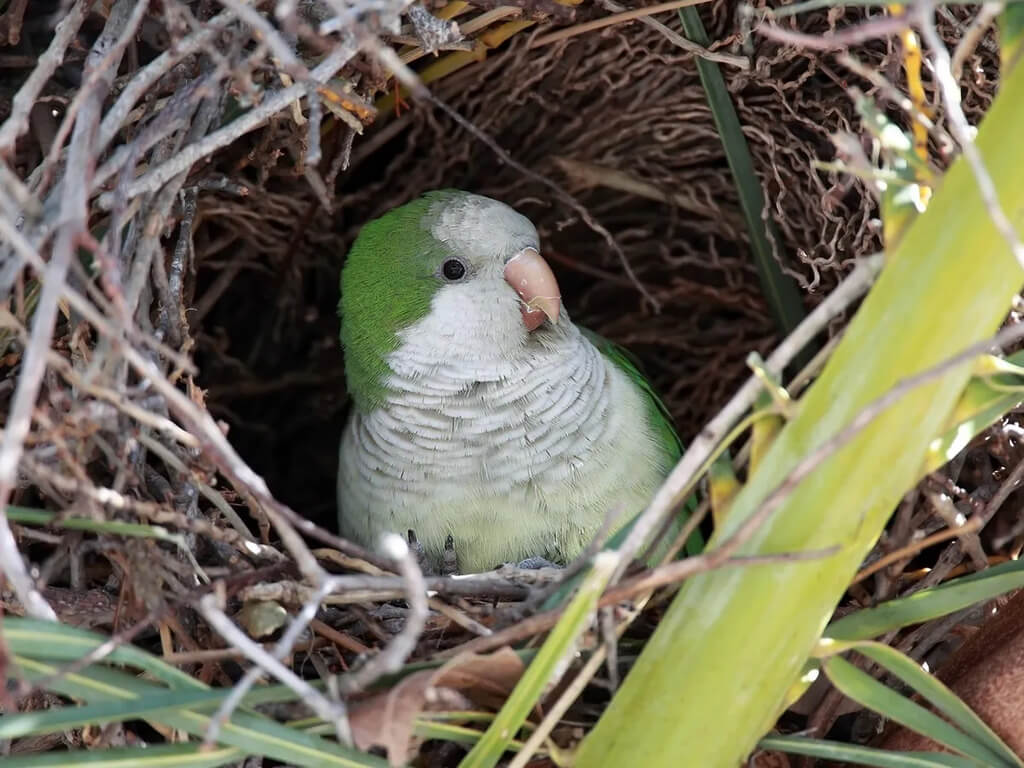
Breeding Quaker parrots is simple, as they will construct their nests. To make monitoring the chicks easier, nest boxes should be provided instead of disrupting their nest structure.
Parents may abandon their chicks if the nest is disturbed. Breeding season for Quakers typically occurs between October and December. A clutch can consist of approximately 4 to 12 eggs. The eggs may start hatching within 24 days.
Training and Socialization
Quaker parakeets are social birds that crave interaction and bonding with their human companions. Spend time talking to and playing with your Quaker every day to strengthen your relationship.
Handling your Quaker gently from a young age is crucial for them to become comfortable with human touch. Start by offering treats and gradually introducing them to being touched all over their body. This will make vet visits and grooming less stressful for them.
Training your Quaker can be fun and rewarding. They’re intelligent birds capable of learning tricks and commands. Use positive reinforcement like treats and praise during training to encourage good behavior.
Teaching commands like “step up,” “step down,” and recall will help establish boundaries and improve your bird’s behavior. Stay patient and consistent during training sessions, as it may take time for your Quaker to learn and respond to commands.
Exercise and Playtime
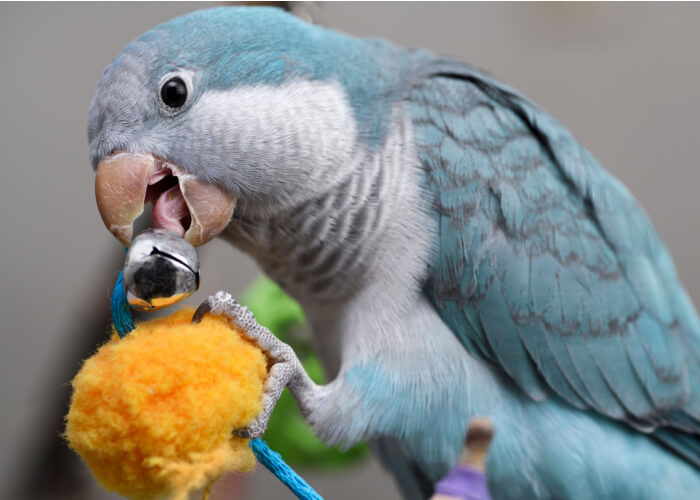
Quaker parrots are smart birds that need mental stimulation to stay happy and avoid behavior problems. Offer them a variety of puzzles, toys, and activities to keep their minds active and prevent boredom.
Toys that encourage foraging and problem-solving are great for Quaker parakeets. Hide treats inside puzzle toys or wrap them in paper for your bird to find and unwrap, mimicking their natural foraging behavior.
Rotate their toys regularly to keep things interesting. Introduce new toys and remove old ones to keep their environment fresh. Quaker parakeets love chewing on toys and shredding paper, so give them safe materials to explore.
It’s also important to give them out-of-cage time in a safe and supervised area. They need at least two hours of playtime outside of their cage in a bird-safe room.
Make sure to turn off ceiling fans, close windows and doors, block fireplaces, and remove any potentially harmful plants or other pets from the room.
Quaker parakeets have a natural instinct to build nests, so allow them to exercise this behavior. They may try to weave items into the bars of their cage or start nesting in a corner of your home with random objects they find. Supervise them closely during playtime to ensure their safety.
Quaker parrots are unique among parrots as they make stick nests.
How Long Do Quaker Parrots Live?
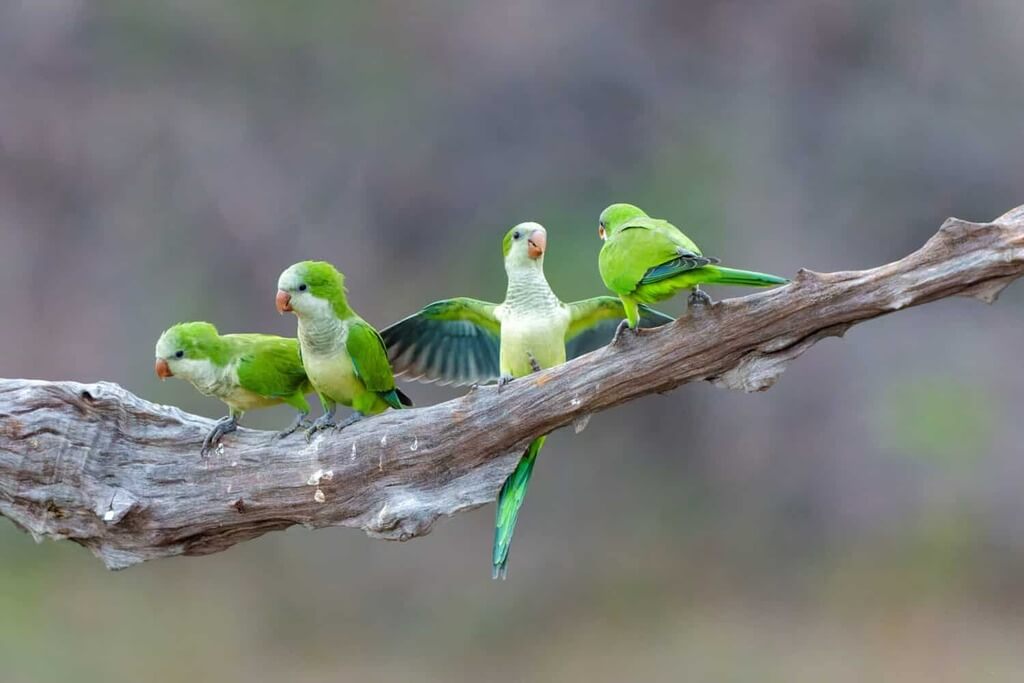
Quaker parrot lifespan is around 20 to 30 years. However, sometimes, they can last even longer with good care. The oldest confirmed Quaker lived to be 22 years old. But there are rumors of them living beyond 30 years in captivity.
In general, monk parrots tend to thrive better in captivity than in the wild. Feral Quaker parakeets typically have shorter lifespans, with many not surviving past 15 years. This is because they face challenges like severe weather, scarcity of food, predators, diseases, and loss of habitat.
Quaker Parrot Price
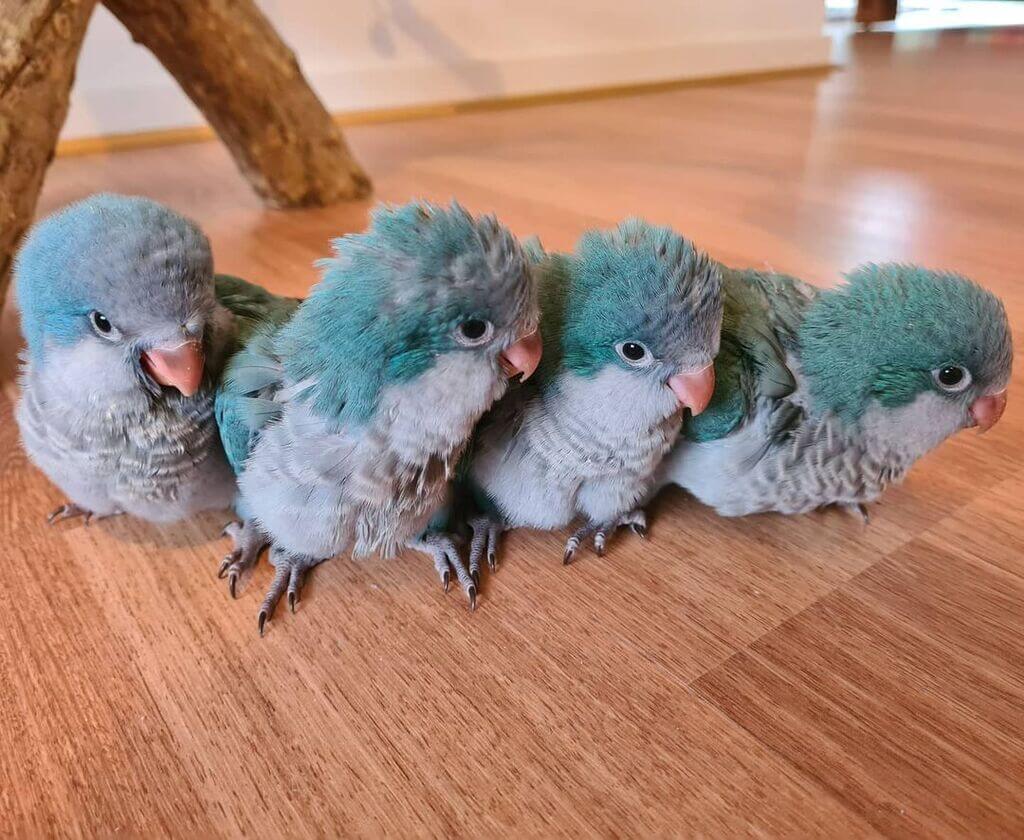
Before getting a Quaker parakeet, check if it’s legal to have one according to local laws and regulations. You also need to check with the U.S. Fish and Wildlife Service.
Quaker parrot for sale is typically available by breeders for $300 to $1,000. You can also find them online through adoption organizations and breeders.
When choosing a bird, look for one that’s lively and alert. Make sure the breeder is knowledgeable about their birds and transparent about their breeding practices and where the birds come from.
FAQs
You can find Quaker parrots for sale online through websites as well as enquire with any local breeder in your area.
Quaker parakeets are moderately high maintenance. They need they need social interaction, mental stimulation, and consistent care.
You can increase their lifespan by providing a proper diet, taking them regularly to a vet for checkups, and offering plenty of mental stimulation.
In the wild, monk parrots typically live for about 10 to 15 years.
They are not really expensive. Quaker parrot price depends on factors like color mutations and breeder reputation.
These birds may show jealousy or possessiveness if things change around them or in their interactions with people.
They might act territorial or defensive, including being aggressive, if they feel scared or stressed.
Conclusion
Quaker parrots are amazing companions for bird lovers. By understanding their needs and requirements, you can create a happy and fulfilling life for your feathered friend.
Before getting a Quaker parakeet, make sure you’re ready for the responsibility. This includes having resources, time, and dedication to provide proper care, like
- Balanced diet
- Regular vet visits
- Social interaction
- Mental stimulation
With love and care, your monk parrot will bring joy to your life for years to come. We hope this guide helps you decide whether these talkative birds are right for your home.
Explore Further











